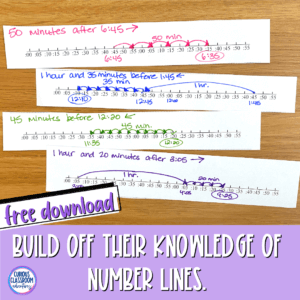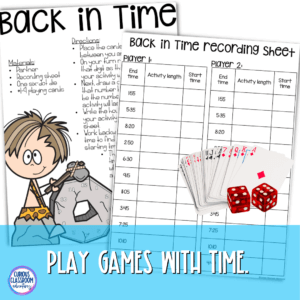Elapsed time can be a tough concept for third graders to grasp. After all, who really thinks about how long it takes to do things in their day-to-day lives? The good news is that there are a few strategies for teaching elapsed time you can use to help your students understand this important math skill. With a little practice, they’ll be able to solve for elapsed time working forward and backward in no time!
Here are a few tips to help you teach your students how to solve for elapsed time working forward and backward:
Tip #1: Use a visual aid.
One way to help your students understand the concept of elapsed time is to use a visual aid, such as a clock or timer. Show them how to set the clock or timer to start at a certain time and then stop it when the desired amount of time has elapsed. This will help them see that elapsed time is simply the amount of time that passes from one point to another.

Tip #2: Build off their knowledge of number lines.
Another way to help students understand this concept is to use a number line. Draw a number line on the whiteboard or create one using butcher paper or chart paper. Have students come up and label the number line with times (e.g., 10:00, 10:15, 10:30, 10:45, 11:00). Then, create some problems for students to solve using the number line (e.g., if it is currently 10:15, what time will it be in 45 minutes?). Point out key words that help students decide whether they need to work forward or backward. This strategy can also be used with an analog clock if you have one available. This is by far my favorite strategy so I want to give you a free download of time number lines to get you started on the right foot!
Tip #3: Have them keep track of their daily schedule.
Another helpful strategy for teaching elapsed time is to have your students keep track of their daily schedule in a notebook or on a piece of paper. They can write down what they did and when they did it, and then use that information to figure out the elapsed time between activities. This is also a great way for them to practice their writing skills!

Tip #4: Play some games!
Last but not least, don’t forget that learning can be fun! There are plenty of online games and apps that can help your students master the concept of elapsed time. A quick search will turn up plenty of results, so you’re sure to find something that’s just right for your class. But kids need to practice social skills so I actually prefer in-person partner games. Here is a collection of partner games for telling time and finding elapsed time. By playing games and engaging in other fun activities, your students will be more likely to retain what they’ve learned.
With these strategies for teaching elapsed time in mind, you’re well on your way to teaching your students how to solve for elapsed time working forward and backward. Just remember to be patient and have fun with it! before you know it, they’ll be masters of this important math skill. Having a done-for-you math unit all about time can be a life-saver by providing lots of different options for your different kinds of learners! Try out different strategies and see which ones work best for your students.



